On the iftar trail: The hidden gems of Delhi, Mumbai
There's a lot to iftar, especially if you want to combine it with gourmanding. In the holy month of Ramzan, follow our guide to quirky, offbeat treats in hidden pockets across the city. The foodwalk is especially recommended if you want to combine gourmandising with an exploration of the winding lanes of the walled city in Delhi and hidden spots in Mumbai.
The fruit chaat is ready; the dates have gone missing, and the Rooh Afzaa is being poured into colourful plastic glasses. As his father, Aqeel Ahmed, makes an urgent phone call, six-year-old Shaafi tries to eat a paneer pakoda from one of the plates on the dastarkhwan (dining spread). "Wait for some time," Ahmed tells the boy and puts back the piece. It is 6.45 pm on the fourth day of Ramzan at Old Delhi's magnificent Jama Masjid.

Members of the Delhi gharana are here to break their fast. As the women prepare iftar -- snacks with which the fast is broken -- the men stroll about the mosque's courtyard. A hundred steps away, a man is supervising iftar preparations for over 300 people and 70 rows of disposable plates full of delicacies have been laid out. Though iftar is usually a family affair, at Jama Masjid, the feast is open to all. If you happen to be in the area around sunset during Ramzan, you can walk into the mosque and be part of the festivities. You can even relish the free platter provided by devotees at themosque.
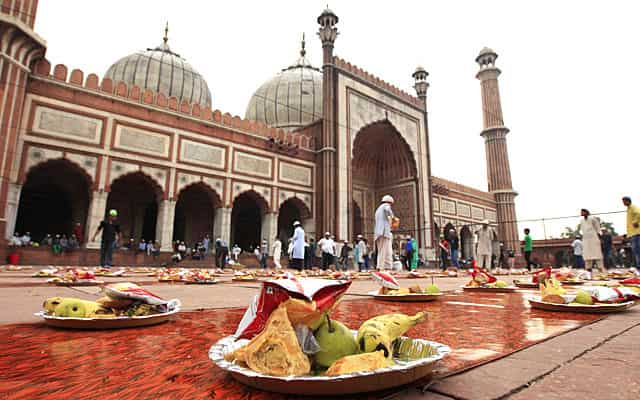
Minutes before iftaar at Jama masjid.
"You don't need to know the family or the person sitting next to you. Just sit where you like and you will get your share," says Ahmed, as a middle aged woman gives him a handful of dates. "Alternately, you can buy snacks from the market around the mosque," he adds.
According to Islam, the Quran's revelation to Prophet Muhammad was completed in this month, making it the most sacred period in the Islamic calendar. During this time, observant Muslims fast (roza) from dawn to dusk. While the fast is broken with iftar, the pre-dawn meal is called sehri (from saher, the Urdu word for 'morning'). The food served in the walled city is legendary. But nothing compares to the culinary delights available here during Ramzan.
If you don't mind the bustle of the market that's crowded during the festive season, iftar here is an enjoyable experience. The area's faithful can choose to break their fast with dates, fruit chaat, samosa, qeeme kee goliyan, or potatochips. Visitors, who want to savour the food and the atmosphere without being jostled, can opt for a night-time foodwalk -- many eateries and shops in Matia Mahal market (opposite Jama Masjid gate number 1) are open until dawn during Ramzan. The foodwalk is especially recommended if you want to combine gourmandising with an exploration of the winding lanes of the walled city.

The Ahmed family breaks its fast at Jama Masjid.
Old Delhi is famous for its nahari all through the year but now is the time to try the many unusual breads and Ramzan dishes like khajla (small pancakes) and pheni (a type of vermicelli). "The idea is to have protein-rich food and stuff which makes you less thirsty. People increase their milk intake as it gives them energy and is easily digestible, says food enthusiast Sohail Hashmi. "This is why khajla and pheni soaked in sweetened milk is an integral part of sehri in almost every Muslim household in the city."
Back at Jama Masjid, the siren sounds followed by the azaan (call to prayer). Then the lights are switched on signalling iftar time. After almost 15 hours of fasting, everyone in the Ahmed family eats a bit faster than usual, except Shaafi and three-month-old Arhaan who are yet to observe their first fasts. Eight minutes and the family is done eating. It is time for prayers. "It is like a get-together; but for us, it means more work," sighs one of the women of the family good-naturedly.
Nahari at Sagheer Dhaba
Sagheer's nahari shop in the Baradari lane of Ballimaran is one of the oldest in the city. Nahari - a stew consisting of slow-cooked meat garnished to taste and served with cooked brain or bone marrow - is a preparation that's available throughout the year, for breakfast and dinner. During Ramzan, however, select outlets like Sagheeer's serve nahari between midnight and dawn. Eaten with tandoori roti, nahari usually leaves you thirsty.

Sagheer nahari shop in Old Delhi's Ballimaran area stays open throughout the night during the month of fasting.
But Mohamad Sagheer (62) claims that his cooks change spices according to the seasons. "You eat at my dhaba in June and I guarantee that you will not go running for water, unlike at other eateries," he says. Sagheer's nahari shop is a 15-minute walk from Jama Masjid gate number 1. You could also enter the Ballimaran lane from Chandni Chowk market and ask for Baradari lane. A meal for two costs approximately Rs 150.
Pakoda at Badshah Sweets
With 30 minutes left for iftar, a crowd of two dozen customers is jostling to buy pakodas at the Badshah sweet shop in Ballimaran market. While conventional pakodas have potato, onion, spinach, chilly and fresh cheese fillings, the pakoda at Badshah sweet shop that is especially in demand is the qeeme ka pakoda or the pakoda with a filling of minced meat.
To cater to the rush which keeps increasing until sunset (iftar time), the staff begins preparations three hours ahead. That's when the pakodas are lightly fried once. Then, depending on what the customer wants, they are deep fried. Spicy and not too filling, these pakodas have traditionally been part of the iftar snack platter in north India.
Sheerman bread at Flora Bakery
Walk straight down the Matia Mahal market opposite Jama Masjid gate number 1 to reach the Chitli Qabar intersection. This is where Flora bakery has been since 1940. Famous for its pastries and cakes, the bakery makes special breads during Ramzan, to be eaten with milk for sehri. Priced at Rs 70, sheermal bread contains flour, semolina, jams and butter. Dry-fruit bread comes at the same price. Although there are five other varieties of bread here, the sheermal is the most popular, says Waqaar Ahmed, owner of the bakery.
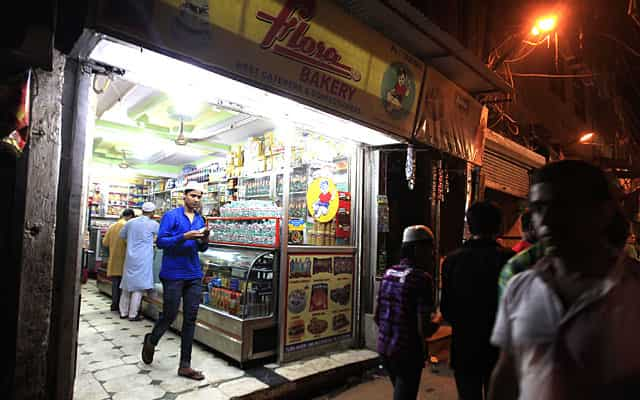
Flora bakery is famous for special breads during Ramzan.
"We make some of these breads during other months of the year as well. But the sale is much higher during Ramzan." Flora bakery stays open from 11 am to 4 am.
Khajla, pheni at Haji Tea Stall
After dinner, head to Haji tea stall in Matia Mahal market. During the rest of the year, tea and various shakes are served here. During the month of Ramzan, however, heaps of khajlas (a kind of pancake) and pheni (a vermicelli dish) are placed on tables outside the shop.
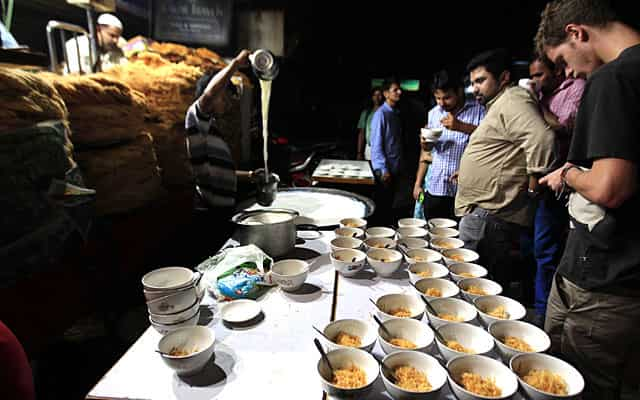
Ready to serve khajla and pheni at Haji tea stall.
Those who prefer to dine at home can pick up a pack of khajla for about Rs 150 per kg. Others can opt for a bowl of pheni or khajla with sugar and hot milk. Priced at Rs 25 a bowl, these dishes are available between 1am and dawn. Haji tea stall also serves sugared cream at Rs 20 per plate.
Chana, Murmura by Jaan Mohd
During Ramzan, the best substitute for pakoda in this part of the walled city is chana (black bengal gram sauteed in masala with tomatoes, onions and coriander) served with murmura (puffed rice). Jaan Mohammad, whose cart is right outside Jama Masjid's main gate, is one of the few who sells chana (Rs 10 per plate) and murmura (Rs 10 per packet) during this month.
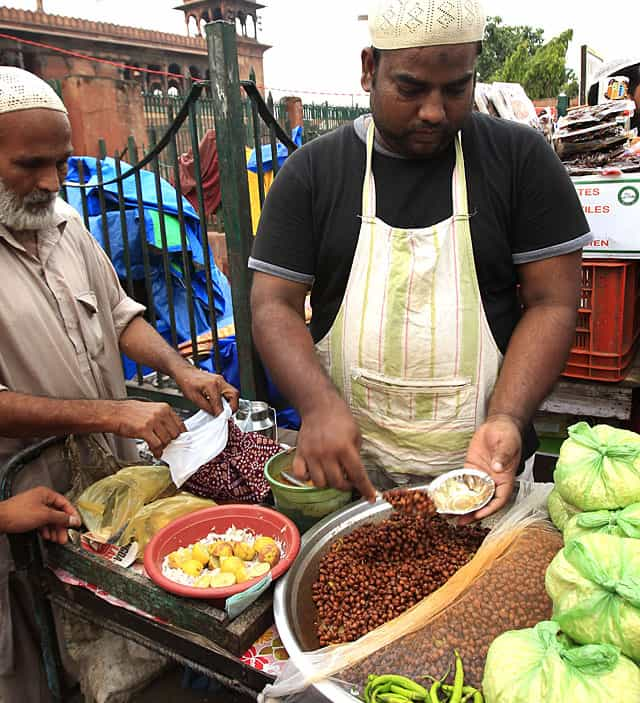
Jaan Mohammad's chana murmura is light on the pocket.
As most local families prefer the more expensive pakodas and fruit chaat, Mohammad's clientele mainly includes migrants and other street vendors in the vicinity looking for an economical snack to break their fast. It is available only between 4 pm and sunset.
IFTAR IN MUMBAI
There's a lot to iftar beyond Mohd Ali Road. In the holy month of Ramzan, follow our guide to quirky, offbeat treats in hidden pockets across the city.
Puri-paratha and Seekh kebab at Nawab Seekh Corner, Kurla
The Kalpana Talkies lane off LBS Road is a busy nightspot through the year. It's especially busy during Ramzan. And the largest crowd is usually gathered at Nawab Seekh Corner, waiting for their order of the "original and famous" seekh kebab and puri-paratha. NSC serves just this one dish: Melt-in-your-mouth seekh kebabs accompanied by the eatery's trademark flatbread, what is essentially a fried paratha.
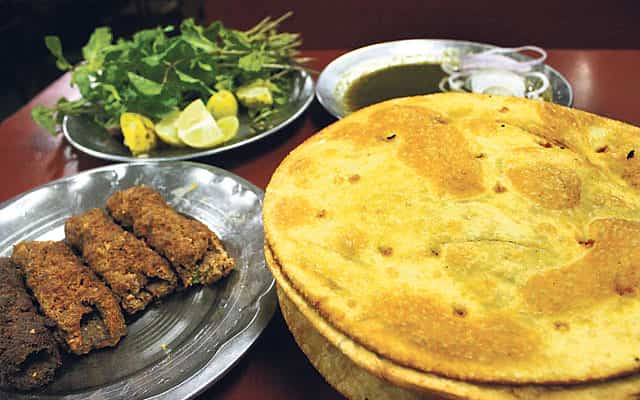
Watching it being made is hypnotic. Batches of uncooked parathas - holes poked in them beforehand to keep them from puffing up into giant puris - are dipped in a vessel of sizzling oil and fried till the outsides are golden and crispy. The oil is then quickly drained through the holes (or most of it is) and the next batch goes in.
What you get, then, is the taste of paratha and the delicious crunch of puri. "This is one dish I never feel guilty about eating," says food critic Roshni Bajaj Sanghvi. Served with two plates of kebabs and a soft drink, it costs Rs 160.
Tunde ke Kebab at Star of UP, Grant Road
This minced-lamb kebab is made at Star of UP with spice and ingredients brought all the way from Lucknow. The mix traditionally incorporates yogurt, ghee and about 160 spices. The meat is hand-pounded for a texture so soft and fine that the kebabs are hard to pick up without having them fall apart. Served with a paratha. It costs Rs 40 for lamb; Rs 80 for beef.
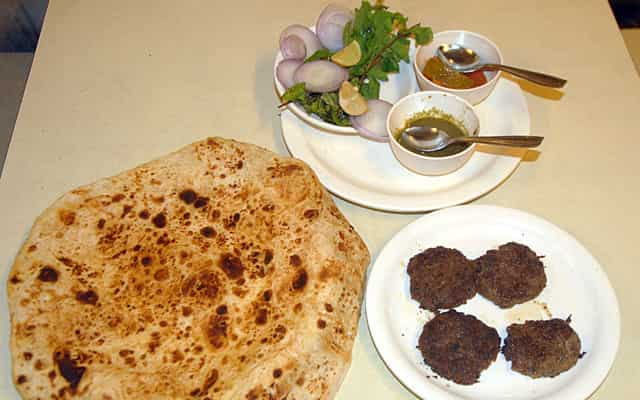
The melt-in-your-mouth Tunde ke kebab. (Shakti Yadav/HT photo)
Baara Handi at Valibhai Payawala in Bohri Mohalla, Bhendi Bazaar
This lip-smacking dish gets its name from the 12 vessels (Baraa Handi) in which pulses-based gravies, each containing a different cut of mutton or beef, would traditionally be prepared and kept ready, to be combined based on the preferences of the diner just before serving. Today, there are usually about seven gravies involved, including paaya or trotter baara handi, oxtail baara handi etc. The resultant stew - a union of mutton, beef and dals topped with garam masala - is a scrumptious iftaar must-have. Served with pillowy soft and slightly sour lamba pav, it costs Rs 150.
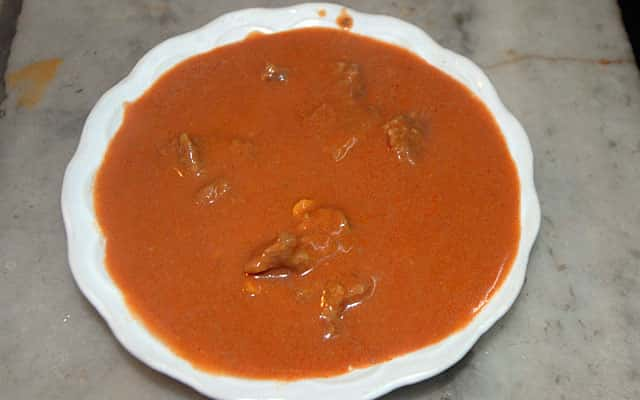
The paaya baraa handi at Valibhai Payawala.(Shakti Yadav/HT photo)
Double Baida Roti at India Hotel in Bohri Mohalla, Bhendi Bazaar
With a thick layer of minced mutton or kheema laid in the centre of two hot, fluffy layers of buttered dough, the India Hotel double baida roti is a local legend. The flour-based rotis are wrapped in a coating of egg before the mince is sandwiched between two layers and cooked to perfection, the perfect amalgamation of meat and egg. India Hotel's DBR is known for its especially flavourful and generous fillings. A meal in itself, each DBR costs Rs 25.
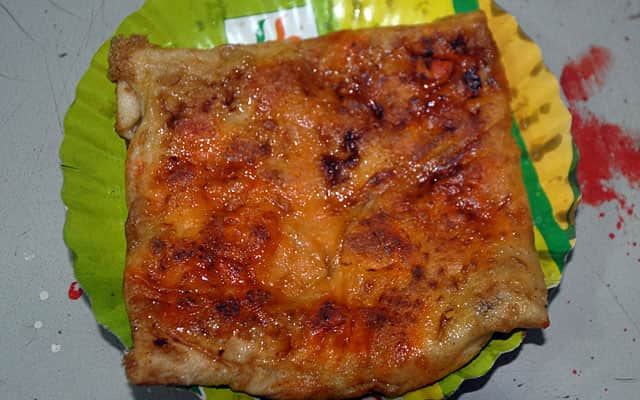
The fluffy double baida roti at India Hotel. (Shakti Yadav/HT photo)
Seekh kebab at Sarvi at Nagpada, Byculla
"This 90-year-old restaurant serves the best beef seekh kebab this city has ever seen," says restaurateur Riyaaz Amlani, founder of the Mocha, Salt Water and Smoke House brands and CEO and managing director of Impressario Foods.
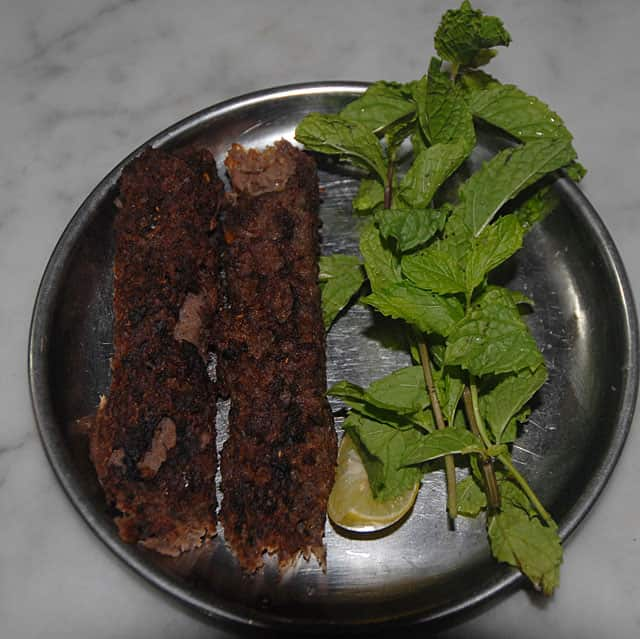
Juicy seekh kebab at Sarvi at Nagpada, Byculla. (Shakti Yadav/HT photo)
Instead of skewering the beef, the minced meat is laid flat on the skewers, allowing the meat to simmer over the coals, infused with a secret mix of spices. The spices, however, are kept low, especially for a seekh kebab, allowing the flavour of the meat to shine through. Served with a large roti, it costs Rs 32.
Shradha Shahani & Harsh R Sharma [With inputs from food writer Antoine Lewis, food blogger Kalyan Karmakar (finelychopped.net) and Kumar Jhuremalani, who runs the foodies' meetup group Pet Pujari





